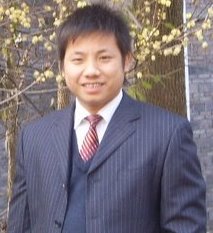The AlgorithmK-means (MacQueen, 1967) is one of the simplest unsupervised learning algorithms that solve the well known clustering problem. The procedure follows a simple and easy way to classify a given data set through a certain number of clusters (assume k clusters) fixed a priori. The main idea is to define k centroids, one for each cluster. These centroids shoud be placed in a cunning way because of different location causes different result. So, the better choice is to place them as much as possible far away from each other. The next step is to take each point belonging to a given data set and associate it to the nearest centroid. When no point is pending, the first step is completed and an early groupage is done. At this point we need to re-calculate k new centroids as barycenters of the clusters resulting from the previous step. After we have these k new centroids, a new binding has to be done between the same data set points and the nearest new centroid. A loop has been generated. As a result of this loop we may notice that the k centroids change their location step by step until no more changes are done. In other words centroids do not move any more.
The algorithm is composed of the following steps:
1)Place K points into the space represented by the objects that are being clustered. These points represent initial group centroids.
2)Assign each object to the group that has the closest centroid.
3)When all objects have been assigned, recalculate the positions of the K centroids.
4)Repeat Steps 2 and 3 until the centroids no longer move. This produces a separation of the objects into groups from which the metric to be minimized can be calculated.
1)Place K points into the space represented by the objects that are being clustered. These points represent initial group centroids.
2)Assign each object to the group that has the closest centroid.
3)When all objects have been assigned, recalculate the positions of the K centroids.
4)Repeat Steps 2 and 3 until the centroids no longer move. This produces a separation of the objects into groups from which the metric to be minimized can be calculated.
Specally,there are some Matlab code for initializtion of K points:
%Initialize the mu's
mu = randn(D,Nmu);
mu = sqrtm(cov(train_patterns',1))*mu + mean(train_patterns')'*ones(1,Nmu);


No comments:
Post a Comment